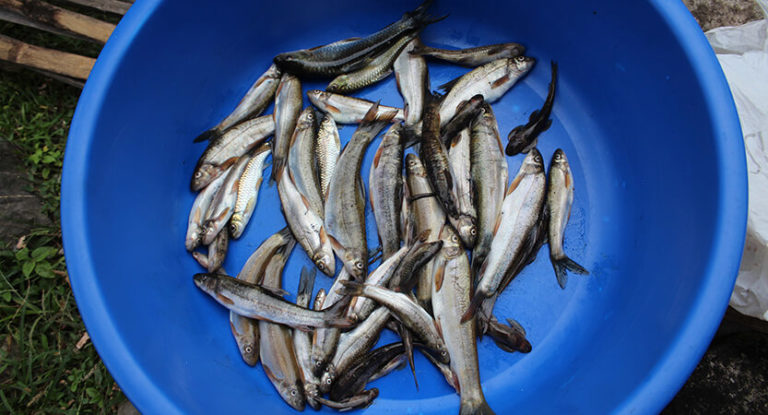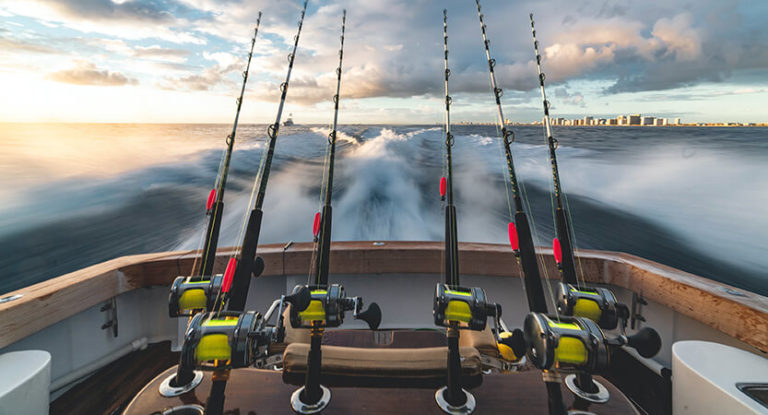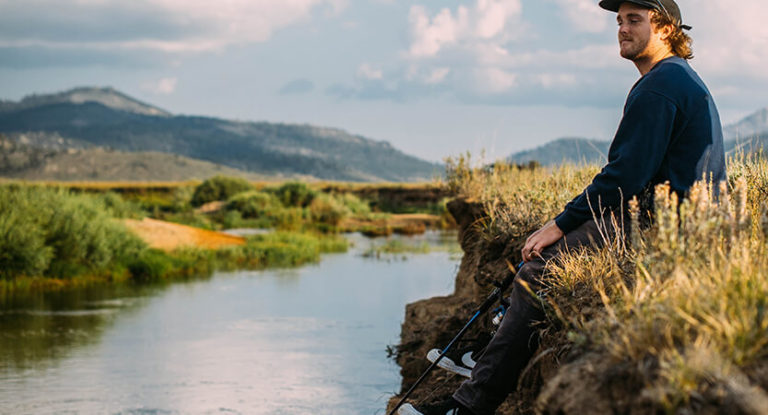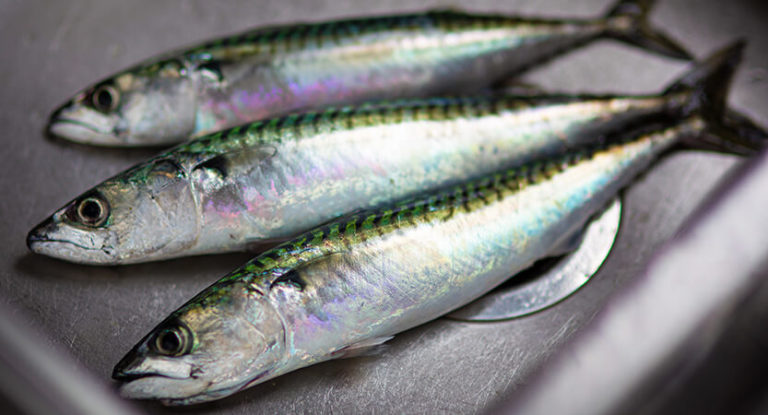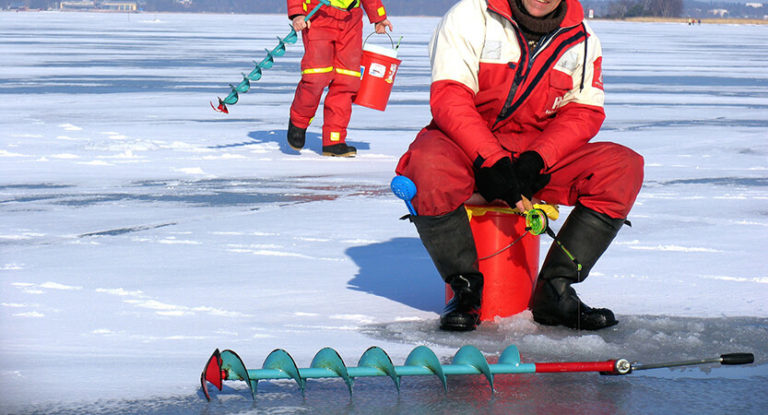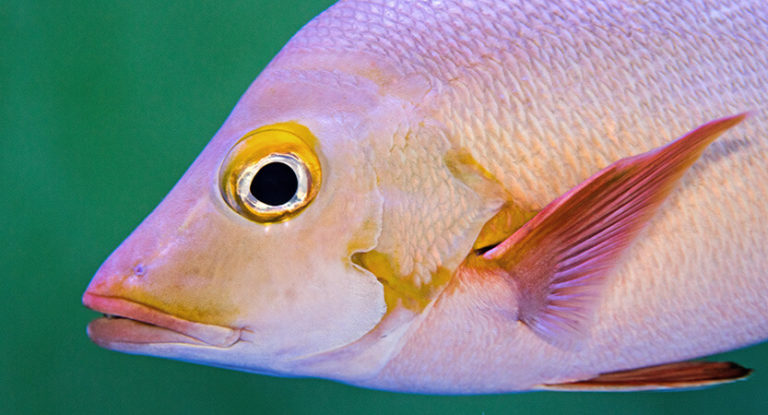Spinning is one of the most popular active gear. It provides for an honest competition with a predator, where diligence and skill of the fisherman is far from last. Sometimes you have to walk more than one kilometer of the coast and explore the mass of visually attractive water areas before the coveted prey falls on the hook. There are no trifles here: even the nuances of choosing a bait and handling it are important. And today we will get acquainted with the technique of fishing with a wobbler, because he is confidently among the leaders in terms of production.
There is a great variety of models of these artificial lures, differentiating in appearance, purpose, degree of buoyancy and other parameters. They are selected depending on the fishing conditions, the characteristics of the rod and the type of intended prey. Each type of wobbler requires the ability to make the appropriate wiring to make the bait as attractive as possible to the predator. In a word, there are a lot of subtleties, for a voluminous thematic work, but we will try to highlight the main points that are especially important for beginners in this article.
Here is an overview of the content of this tutorial, feel free to jump to any section you care about:
For more fishing instructions, take a look at these popular Trizily links: Best Bass Fishing Lure, Best Fishing Sunglasses.
- What Factors Affect Fish Biting
- What Is A Clutch On A Fishing Reel
- How To Set The Drag On A Fishing Reel
Advantages and disadvantages of bait
Wobbler is an artificial bait for hunting various fish species (mainly predators). For the most part, they resemble small fish, but they can imitate other representatives of freshwater fauna. They are made from tough artificial polymers, in contrast to metal lures and soft silicones . They can be used at any time of the year, but they are most effective in summer and autumn.
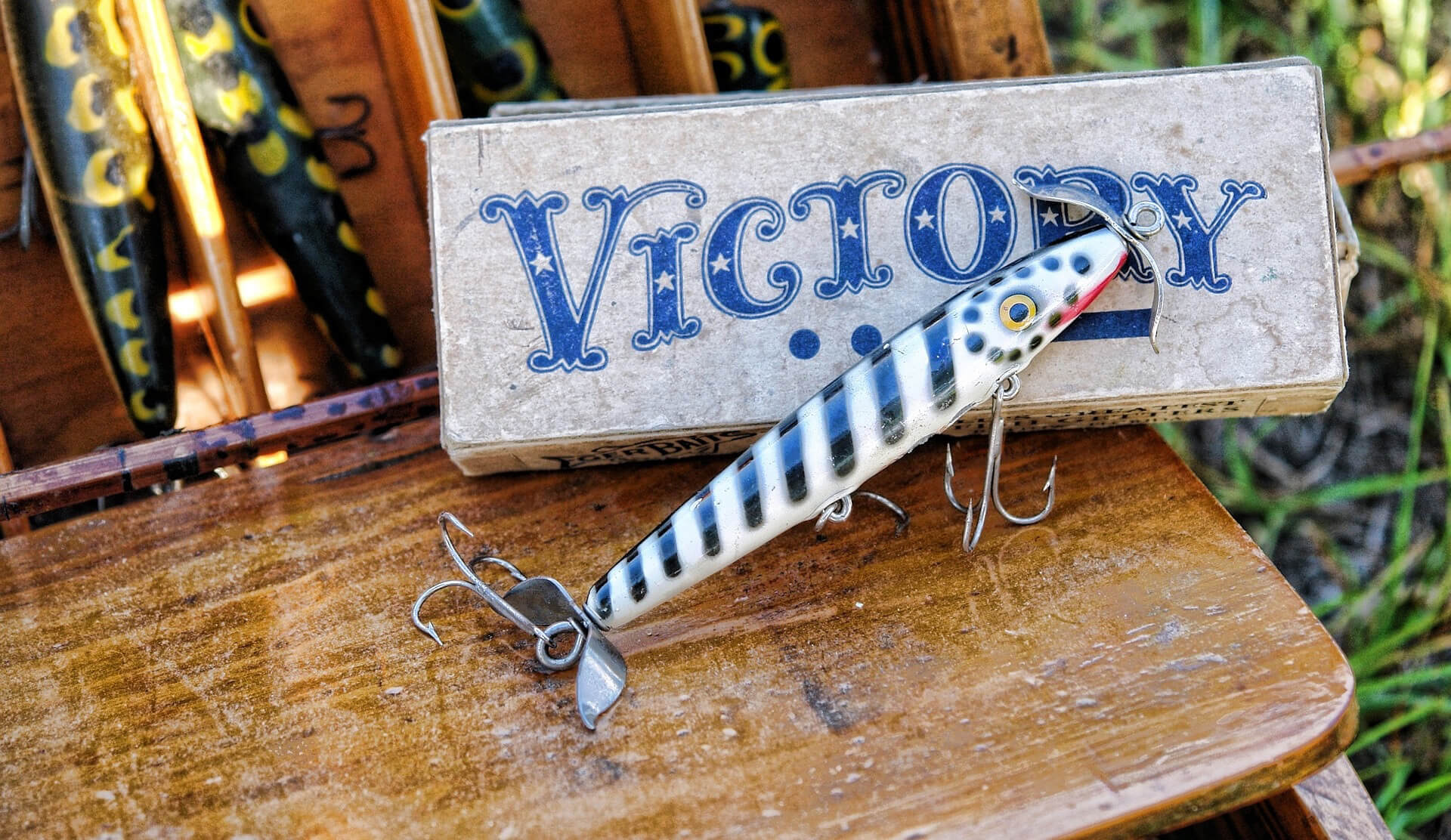
Among the indisputable advantages of wobblers, it is worth noting the following:
- With the right choice of bait, you can fish all the horizons of the water, from the bottom to the surface.
- Lures are used to catch predatory fish of all species living in our reservoirs, and sometimes even peaceful representatives of cyprinids.
- You can choose an option with your own game, with the animation of which even a beginner can handle.
- When the conditions of fishing or hunting object change, the artificial fish can be instantly changed.
- Wobblers are much more durable than soft silicones: they suffer less from intensive use and contact with the teeth of a predator.
Among the most obvious drawbacks of these lures can be called high “hookiness”, which makes it difficult to fish out in the conditions of thickets and curled bottom. In addition, it is difficult for a neophyte without the guidance of a mentor or at least possession of the theoretical component to master the basics of the technique of handling them.
Well, gods don’t burn pots, and no advanced angler was born with the experience to make huge catches in a single session. Everything is learned in the course of practice: show perseverance – and luck will not keep you waiting!
Spinning equipment
When choosing a rig, first of all, you should focus on the characteristics of the intended prey and fishing conditions. They dictate the selection of bait by weight, and the requirements for other elements depend on it.
Pros of twitching have in their arsenal more than a dozen wobblers of various classes, colors, weights, and take with them on fishing a significant supply of equipped spinning rods for all occasions. What if the wind? Or is the predator stubbornly unwilling to attack the proposed “delicacy”? Or does an island of greenery look the most promising? You need to be sensitive to all the realities.
For the initial acquaintance, all these tricks and costs are useless – you need to choose something most comfortable and versatile. Therefore, for a beginner starting to master the basics of catching a predator with a wobbler, the following equipment can be recommended:
- Rod . In all cases, preference should be given to forms from trusted manufacturers. Do not go into dubious savings: take a carbon fiber (not to be confused with a fiberglass one!) Or a composite rod with a cork handle – it is more “grippy” and does not slip in your hand. The length is selected depending on the fishing distance, but it should be borne in mind that it is difficult for a beginner to cope with long casts. Therefore, it is better to take a spinning rod with a length of 2.1-2.7 m – this is both a sufficient distance for fishing from the shore, and ease of handling. It is better to opt for a medium or medium-fast action blank, and the rod test should correspond to the weight of the bait. In most cases, medium-light or medium-grade blanks should be recommended to novice anglers – they are the most versatile.
- Fishing line . Most adherents of this method of fishing vote in favor of a braided line: the extensibility of the monofilament slows down the reaction of the bait, which is unacceptable for twitching. The choice of the thickness of the cord depends on the size of the intended trophy: if a braid is needed for a pike at least 0.16 mm thick, then 0.1 mm is enough for a perch.
- Leash . Many spinners believe that the leash interferes with realistic wobbler play when twitching. This is partly true, and if the purpose of “hunting” is a pike, some sensitivity should be neglected in favor of reliability – it bites the cord with ease. It is best to use pre-made soft tungsten leads, but a much more affordable lead material will do. For a cautious predator, fluorocarbon with a cross section of up to 0.35 mm is optimal.
- Reel . When fishing with a wobbler in freshwater reservoirs, there is no need to equip a spinning rod with a heavy and very expensive multiplier (unless you are going to challenge a trophy catfish). The ideal option would be a high-quality “inertia” with a friction clutch . A spool capacity of 2000-3000 will be enough for a start.
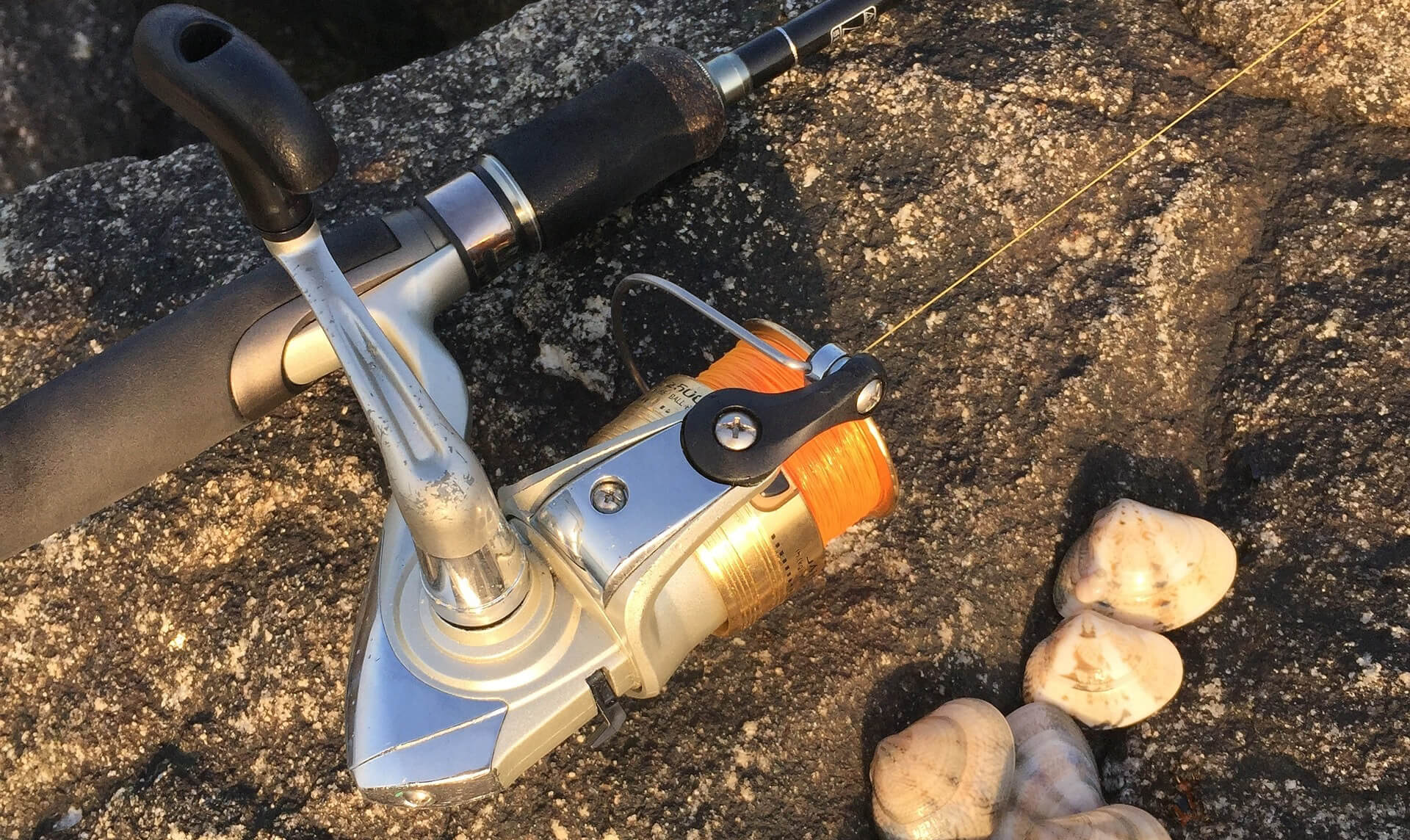
Wobblers classification
As mentioned above, there are many models designed to achieve all sorts of goals. Their classification is based on:
- Construction . On sale there are wobblers with and without blades, with a different number and arrangement of hooks and weight. Each species has its own name: minnow, crank, fat, popper, and so on.
- Visual embodiment . Most of the models mimic the main prey of freshwater predators – juvenile fish. However, there are wobblers that are used to catch representatives of the peaceful carp family. These are mainly imitations of crustaceans, insects and other universal fish delicacies.
- Additional effects . Not only can artificial fish be painted in a wide variety of colors, even the most fantastic, but some of them are also capable of glowing in the dark. In addition, there are variants equipped with long-range casting systems, as well as models equipped with special “rattles” that attract an inactive predator.
- Weight . All models are differentiated by weight and are selected based on rod test and current strength. When selecting, attention should be paid to labeling.
- Size . A large pike will not be attracted by a miniature bait, and a large wobbler will not fit in the mouth of a grass perch. Therefore, the size of the “delicacy” is selected depending on the type of intended prey.
- Buoyancy . Be sure to pay attention to the letter markings indicating the degree of buoyancy. Some “fish” immediately float up when the work is stopped, others remain at the same depth (suspenders), and still others drown with varying degrees of impetuosity. Sinking models are designed primarily for fishing pits and other deep areas. Suspenders are characterized by maximum versatility, however, there are no models that are fixed in a certain layer of water. They rise and sink, albeit very slowly, and their stability is highly dependent on the weight of the leash and the strength of the current.
- Work horizon . If buoyancy is determined at rest, then the horizon of work is during the drive. Some wobblers are designed for surface fishing, while others work effectively at more or less significant depths. This characteristic also has its own letter code.
If you lack experience, ask the seller or an experienced spinning rod for detailed advice on choosing the optimal model, or thoroughly prepare for the first fishing, at least theoretically.
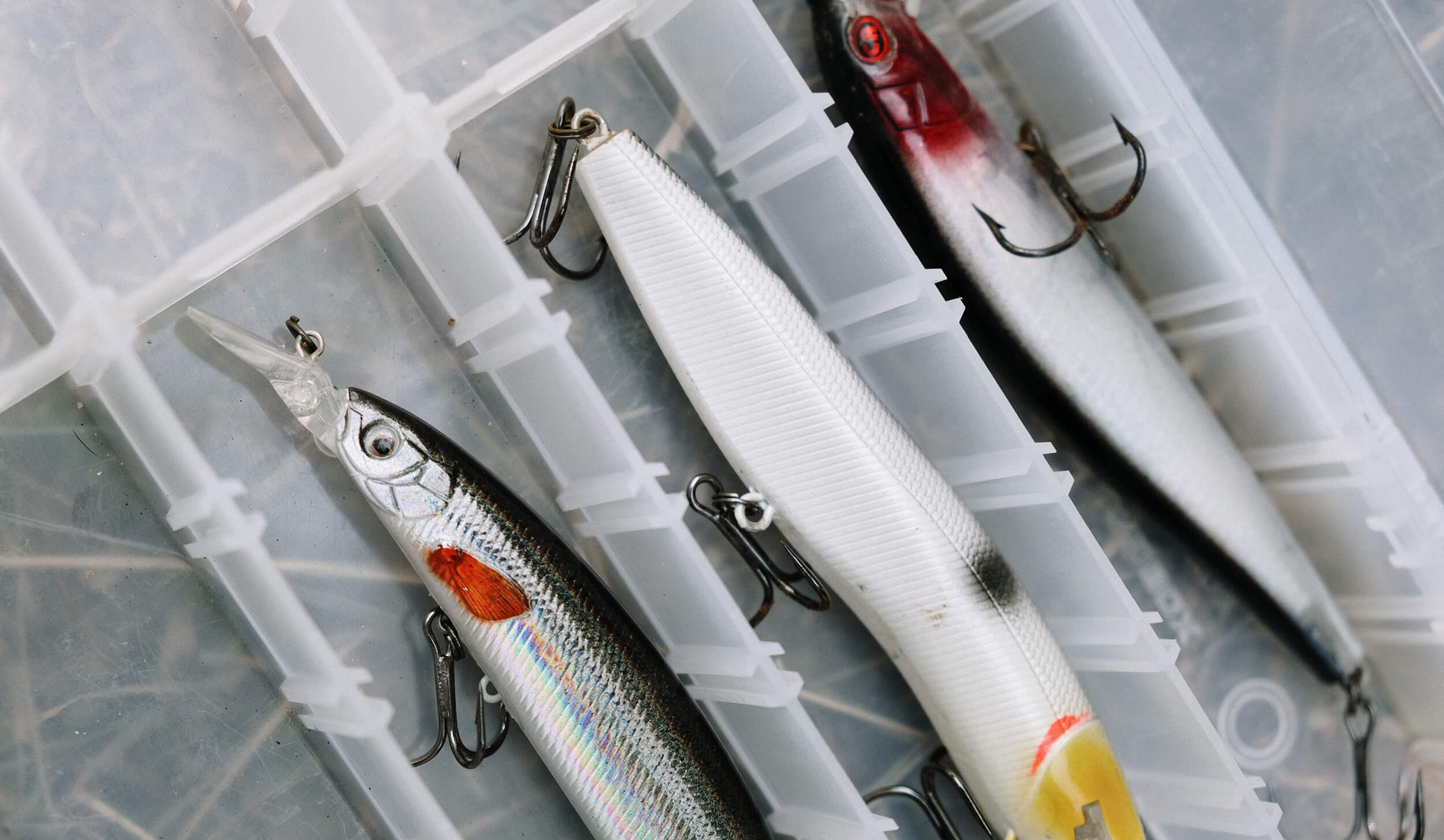
Surface Fishing Models
Among the wobblers most often used in the upper water horizons, it is worth noting:
- Popper . Perhaps the most famous surface wobbler. It has no blades and is characterized by a “cut” front end. During operation, the popper emits a characteristic gurgle and raises a mass of splashes.
- Propper (propbait) . Unlike the previous version, similar in sound, the propper is a kind of stickbait, but it is equipped with blades, which ensures its rotation during operation. The propper is effective even with elementary uniform wiring.
- Stickbait . Bladeless bait, in execution close to a miniature stick. She does not have her own game, so the angler’s experience in twitching comes to the fore.
- Walking . Another stickbait option for twitching and its variations. When working, the walker prowls from side to side, that is, walks (hence the English-language name, which means “walking”).
- Cicada . On such universal wobblers, you can catch both a predator and peaceful representatives of the fish fauna. “Cicada” is a collective name for hard baits made in the form of insects. For example, the chub goes well to imitate the May beetle.
- Crowler . Another model with a paddle that provides smooth rocking and characteristic chewing, typical of crucian carp feeding near the surface. There are crawlers with wings that increase casting distance.
Deep sea wobblers
For fishing at low water levels, the following types of hard baits are suitable :
- Minnow . The widest class of lures, differentiated by the degree of buoyancy. There are models with a pronounced play of their own and without it at all. A characteristic feature of this class is a narrow, run-through “body” and a characteristic scapula in the bow of the “fish”.
- Jerk Bay . Large, heavy bait designed primarily for hunting trophy predators. Jerk baits are used by experienced anglers in alliance with a powerful fast action blank and multiplier reel. This wobbler is ideal for trolling catfish and large pike .
- Crank . It is characterized by a rounded teardrop-shaped body and one or two hooks. In the bow of the “fish” there is a blade in the form of a spatula. When passing the crank, a characteristic tremor is created, attractive to the sluggish, cautious hunter.
- Fat . Another “plump” wobbler that connoisseurs of the English language can understand by the name. Its geometry and the presence of a paddle contribute to its own expressive play at any depth. Even a beginner can master the technique of working with it.
- Shad . It is characterized not only by its shape, but also by its weight, which provides a very realistic and attractive game for the predator. It is not worth recommending shads to beginners: it is the tricky weight that impedes a stable balance, so the bait needs constant monitoring.
- Rattlin . Lures of this type do not have blades. They are characterized by a flattened body and self-confident play. Rattlins are somewhat underestimated by anglers and are used primarily as “scouts” of water horizons. However, these lures show the highest efficiency in catching perch and zander in winter.
- Swimbait . An interesting wobbler for fishing at shallow and medium depths, gaining more and more popularity among spinners. Its characteristic feature is a segmented body that realistically wriggles during operation.
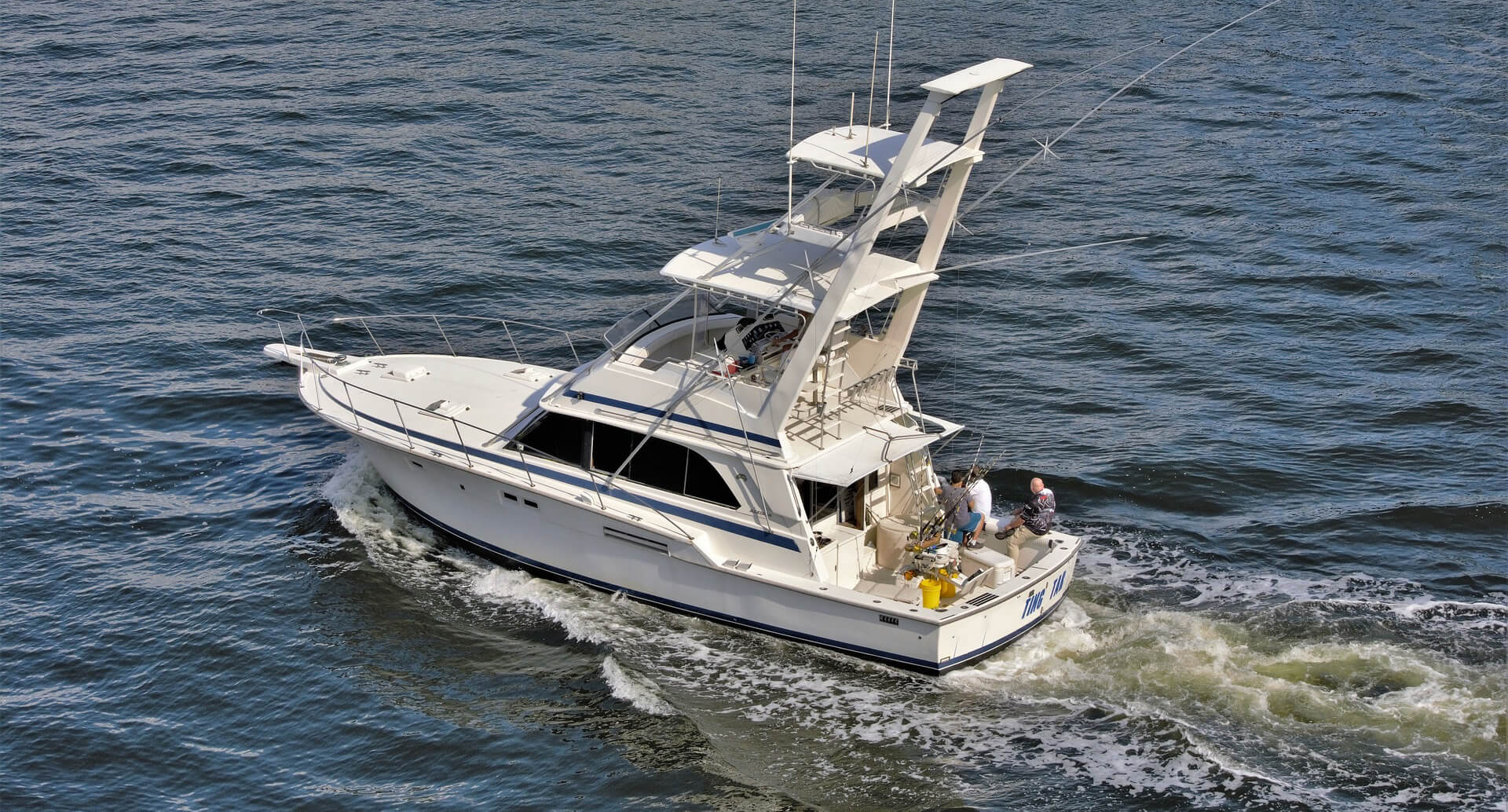
Selection basics
As you can see, there are a lot of types, how to choose the right one? To do this, you need to consider a few points:
- Type of intended prey . It is imprudent to put a large bait for fishing on a pond where trophy individuals do not meet. At the same time, the habits of the intended prey must also be taken into account. For example, walleye enjoys orderly, distinct play, while a cautious summer pike can be attracted by neat animation with pauses and minor noise effects.
- Rod characteristics . The weight of the bait is in direct proportion to the tests of the blank. With the right selection, you can achieve optimal aerodynamics when casting, obedient behavior of the wobbler directly when fishing, as well as instant transfer of the bite to the rod.
- External factors . Downstream models are usually heavier and less prone to drift. The fishing horizon, the type of posting, the characteristics of the bottom and the presence of vegetation are also taken into account.
- Objectives . The angler’s goal may not be to hunt for a predator directly, but to explore the water area. Usually rattlins are used for this.
- Personal skill . At first, it is advisable to choose wobblers with their own game, which behave seductively even with primitive uniform wiring. Mastering twitching will take time, and better – and the guidance of an experienced mentor.
Basic wobblers
The main stage of spinning fishing is the posting immediately after casting. In the course of it, the main task of the angler is to use the possibilities of the wobbler to the maximum. This means that the angler either does not interfere with his own play, or animates him with rod movements and manipulation of the reel.
The most popular types are:
- Uniform . The simplest wiring, based on the uniform winding of the cord onto the reel. Its modification is a variant with a change in the speed of reeling, which makes the behavior of the bait more natural, because nothing permanent in nature exists. This option can be recommended for beginners, and for maximum efficiency you need to select wobblers with your own animation, for example, poppers, fetas and cranks.
- Twitching . Before us is the time-tested classic of wobbler fishing – twitching. When the rod moves from side to side, the “fish” scours along the horizontal amplitude set by the spinning player, and acquires animation that is natural for wounded juveniles. This option is ideal for the entire minnow class, as well as for poppers.
- Jerking . The wiring is similar to the classic twitch, but much sharper and more aggressive. It is used mainly for trophy fishing, with large jerk baits being the main baits.
- Pumping . In this case, the form does not move from side to side, but soars up sharply. In this case, the wobbler walks in all planes, both horizontally and vertically. Here, the use of lures with negative buoyancy is most effective.
- Ripping . The opposite of pumping – the blank goes down sharply, which increases the falling speed of the sinking wobbler. Ripping allows you to lure large individuals out of the deepest holes.
- Step . Wiring is carried out either exclusively by winding the reel with pauses, or supplemented by up and down movements of the rod. Buoyancy is fundamentally important here: during a pause, sinking lures sink to the bottom, floating models rise up, and suspenders hang in the water column. Most of all bites are traditionally at the time of the fall or “take off”.
Experienced anglers easily vary the types of harnesses depending on the fishing conditions and the type of wobbler, and sometimes use all kinds of their combinations. The direction and amplitude of rod movements, the duration of pauses and active phases change.
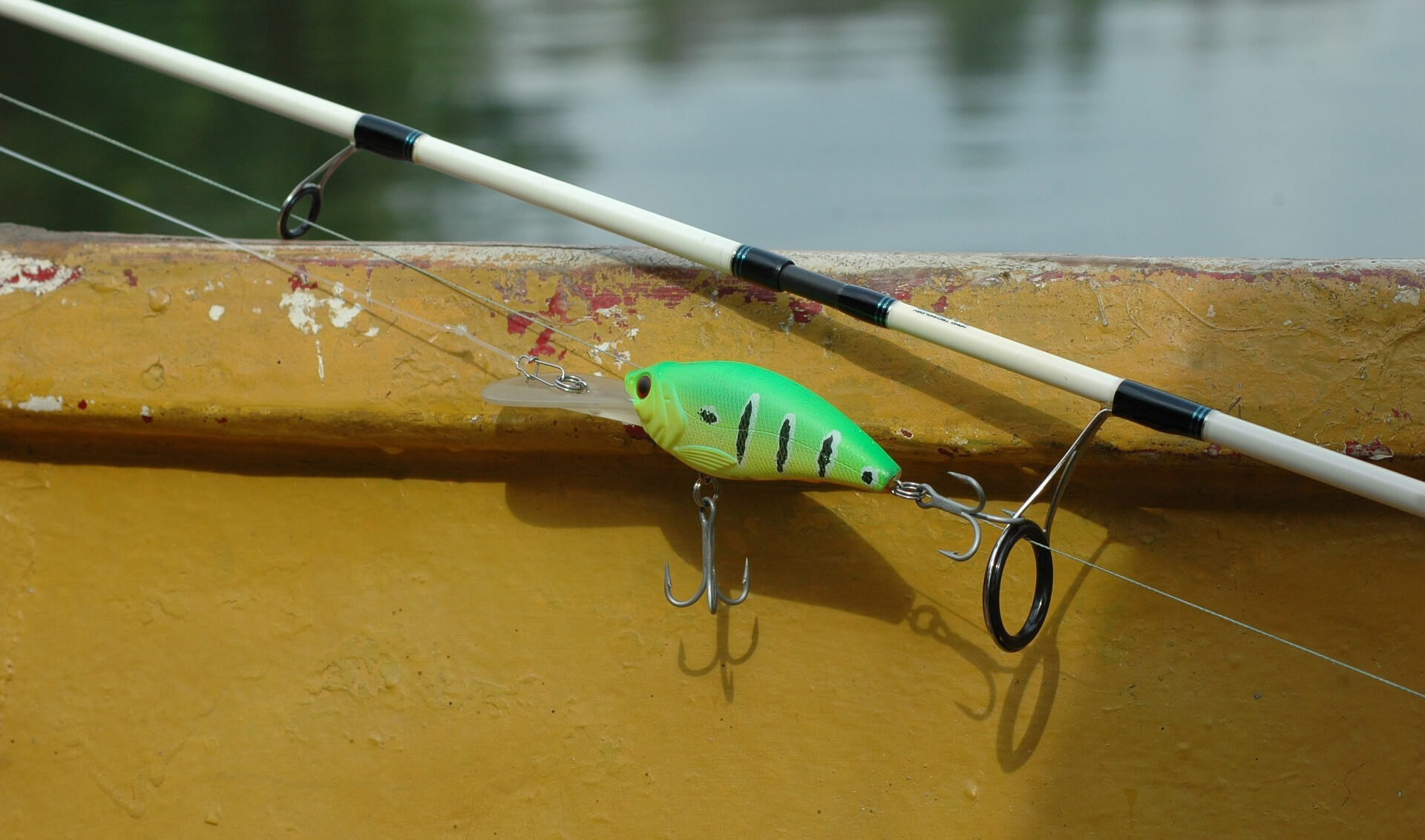
Catching various types of fish
Hunting for various representatives of ichthyofauna has characteristic features:
- Perch . Small light baits are mounted on grass perch, which are carried out on insignificant horizons. An even and stepped drive at a sufficiently high speed is recommended. The Striped Rogue is partial to shiny accents and noise effects.
- Pike perch . Fanged in summer goes to considerable depths, coming to the surface mainly at night, for food. At this time, trolling in combination with the use of luminous poppers is effective (gurgling and splashes additionally attract the fanged). In spring and autumn, fishing from the shore at medium depths is effective, and both twitching and step can be used. The main requirement for the bait is expressive animation, as well as extra strong and sharp hooks that can pierce the hard mouth of a pike perch.
- Pike . This predator is caught on wobblers of large size and significant weight. For her prey, jerk-baits are specially sharpened, which she usually attacks on pauses, especially during periods of inactivity. Poppers are also used, as well as minnows of various modifications. Classic wiring – unhurried, distinct twitching or jerking, depending on the degree of activity of the hostess of our reservoirs.
- Catfish . For catching the river giant, trolling is mainly used when using the largest bait, sometimes with noise effects. It is carried out at considerable depths near the pools and pits, where catfish presumably live, but slightly upstream.
- Asp . The only predatory representative of carp is hunted mainly on small and medium-sized rivers, letting the bait freely downstream. Asp obtains food almost at the surface, stunning water small fry with blows of its tail. Therefore, both twitching and steps are effective with minimal deepening. It should be borne in mind that the mouth of the asp is small, so you need to choose small and medium wobblers.
- Trout . The river queen of the salmon family hunts mainly at shallow depths, where she collects insects that have fallen into the water from the surface. In this regard, expressive twitching on a cicada is effective. At lower horizons, fishing with sinking wobblers of bright color, preferably with red, yellow or orange spots, is prey.
- Chub . This is a very cautious fish with peculiar food preferences. He can watch the bait for a long time before deciding to attack. For its extraction, miniature wobblers up to five centimeters long are used. As a rule, these are imitations of insects (in particular, the May beetle), as well as small flat “fish”.
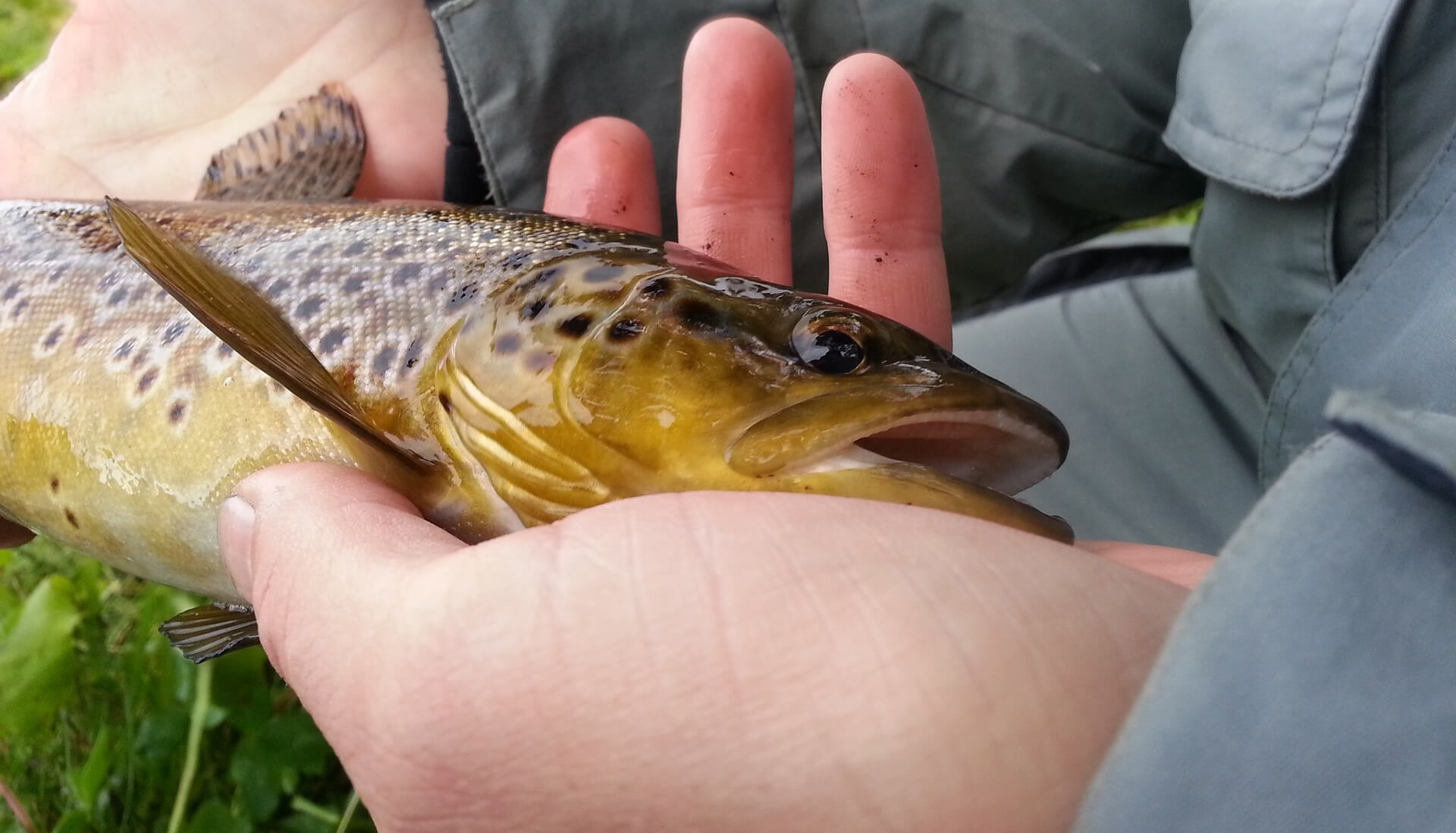
Features of winter fishing
Wobblers are considered mainly summer lures, but they show sufficient efficiency for winter fishing. Their use on ice-free water differs little from the summer version. In this case, spinning is used, stepped wiring, sinking lures and fishing at significant depths are in favor.
An alternative option is to use a short ice rod in combination with hole drilling. Here, the determination of the location of the predator comes to the fore, so the use of an echo sounder is strongly recommended. The holes are fished alternately, and the technique is similar to the use of a balance bar . Fishing with a sinking wobbler is especially promising, but you can also correctly load the pop-up option. It is important that the lure has an expressive play on surfacing or diving, because classical twitching is not feasible under these conditions.
It is recommended to use small, maximum, medium wobblers. The rattlins show themselves especially well: they productively catch perch, pike perch and even the most cautious pike in winter. A feature of winter models designed for plumb-line fishing is the presence of a fastening ring on the “back” of the lure.
Experienced anglers’ tips
And finally, according to the good old tradition, here are some tips from experienced anglers:
- Start simple . In this case, we are talking about all aspects of fishing. The first wire should be uniform, and the first bait should be an easy-to-animate wobbler, for example, a crank. And in general, at first, it is better to make a choice in favor of the versatility of the gear, based on the average production and standard fishing conditions. By the way, about the conditions: at the start, you should not choose a river with a rapid current or a body of water with abundant thickets or a curled bottom as a fishing spot.
- Take advice . If you have not yet tried to catch a predator with a wobbler or your experience in this area is still limited, gratefully accept the help of experienced anglers. This is especially true for the choice of bait, as well as setting the correct posting for a specific model and predator.
- Keep your rigs in order . During the posting, the wobbler can collect algae and all kinds of debris, so the lure should be inspected and cleaned after each cast. After fishing, it is strongly recommended to thoroughly rinse the wobblers, wipe them dry and store them in boxes with separate cells.
Do not be afraid to try new ways of fishing : maybe discovering this bait will give you an unheard of catch and a lot of unforgettable impressions. And we, for our part, will support you in all your fishing endeavors!

